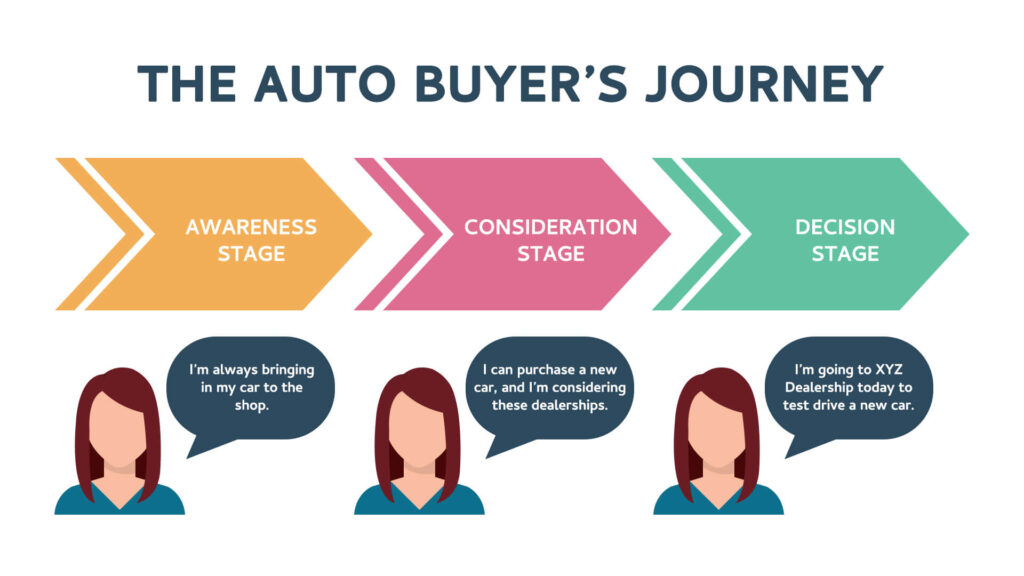When content and search engine optimization (SEO) converge, they can give you a big advantage…

January 18, 2024 | Mindy Weinstein | SEO |
Psychology of Search Intent SEO: What It Means for SEO & Content
Jumping straight into SEO with just keyword research and content creation is a common pitfall. Overlooking the deeper understanding of user intent and behavior misses the essential element of why users search and what drives their online journey.
The psychology of search dives into the user’s mind, revealing the motivations behind search queries. It’s about seeing SEO as a pathway to empathize with and meet the user’s needs, transcending technical tactics. By integrating this insight into your strategy, you ensure that your content doesn’t just attract traffic but resonates and engages effectively.
What Is Search Intent?
In SEO, success is not just about numbers but understanding your audience’s motivations. Key questions include who visits your website, what they’re searching for, and how many convert. This insight goes beyond keyword optimization, ensuring your content truly resonates.
Understanding ‘searcher intent’ is crucial. It’s about why users are searching — for information, to purchase, or to explore options. Recognizing these intents helps tailor content to meet specific user needs, enhancing the likelihood of conversion and the user experience. By focusing on search intent, your SEO aligns with actual user motivations, making your content more relevant and effective.
Understand and Analyze Your Audience
- Demographic Information via Keywords: Utilize tools like Demographics.io to analyze your top keywords. Understanding the demographics (age, gender, interests) of those searching for these terms helps you create a detailed profile of your typical user. This insight enables you to tailor your content more effectively to their preferences and needs.
- Analyzing Competing Brands: Gain insights into your competitors’ audience. This can provide valuable information for identifying the types of content that resonate with your target audience and help you understand the geographic areas where your competitors are most successful.
- Gathering Data from Social Platforms: Social media platforms are treasure troves of consumer data. Use these platforms to develop detailed personas or identify content topics that will engage your audience. Tools like Google Analytics and Facebook Insights can provide rich demographic information, helping you understand who interacts with your brand and how best to reach them.
Identifying Search Intent
- Know vs. Buy Intent: When analyzing keywords, it’s essential to determine if the searcher’s intent is to acquire information (“know”) or to make a purchase (“buy”). This distinction should guide how you structure and optimize your content.
- Practical Application: For example, if you’re in the business of selling cars and want to rank for “fuel-efficient cars,” understanding that this is likely a “know” intent is crucial. In this case, Google interprets this keyword as users seeking information, not necessarily looking to buy immediately. Therefore, creating informative content like articles or guides on fuel-efficient cars will be more effective than optimizing a product page for this term.
- Adapting Content to Intent: It’s important to adjust your content strategy based on the identified intent of your keywords. For instance, a keyword with a “buy” intent should lead to optimized product pages designed to convert, while a “know” intent keyword should direct users to informative content.
By focusing on these aspects of SEO Psychology, you can craft a strategy that not only improves your site’s visibility in search engines but also ensures that you are attracting the right kind of traffic — visitors who are genuinely interested in what you have to offer and are more likely to convert.
User Journey & Keywords
The concept of the user journey in SEO is an intricate blend of understanding your target customers and customizing every interaction to guide them through their purchase process. It is important to recognize that each potential customer embarks on a unique journey. This journey comprises various stages, each requiring a specific approach in terms of content and keyword strategy.
Choosing Targeted Keywords
- Usage Over Volume: Focus on keywords that are actively used by your audience, rather than just those with high search volumes. It’s essential to identify words or phrases that real people use when they seek information related to your product or service.
- Relevance is Key: A keyword’s relevance to your audience’s needs and your business goals is more important than sheer search volume. Choose keywords that are closely aligned with your audience’s interests and queries.
- Conversion Potential: Determine whether a keyword is a ‘conversion word.’ This means understanding if the keyword will likely lead to a tangible action, like a purchase or a sign-up, thus contributing directly to your business objectives.
Mapping Keywords to the User Journey
- Optimizing for Each Stage: Ensure your website is optimized with keywords that reflect each stage of the user journey. This means having content that aligns with the different ‘moments’ or needs your audience experiences.
- Content That Captures Moments: Your content should be structured to resonate with the user at each stage — whether they are just becoming aware of a need, considering options, or ready to make a decision.
Understanding the User Journey Stages
- Awareness: In this stage, users typically realize they have a need or a problem. For instance, someone might search for “symptoms of a car breakdown,” indicating they’re just starting to understand their problem.
- Consideration: Here, users are evaluating their options. A search like “best methods for car repair” shows they are considering different solutions.
- Decision: At this stage, the user is ready to take action. Searches like “car repair services near me” indicate a readiness to purchase or engage in a service.For example, a personal injury law firm might target different keywords for each stage. During the Awareness stage, content could focus on “what to do after a car accident.” In the Consideration stage, the focus might shift to the “benefits of hiring a personal injury lawyer.” Finally, in the Decision stage, the firm would optimize for keywords like “personal injury lawyer near me” to capture users ready to engage their services. Similarly, for a car dealership, the Awareness stage might involve content around “fuel-efficient cars,” moving to “new vs. used cars” in the Consideration stage, and finally focusing on “car dealerships near me” during the Decision stage.
Voice and AI Search
In January 2018 alone, there were over 1 billion voice searches, which has undoubtedly grown since. Voice search, powered by AI assistants like Google Assistant, Amazon Alexa, and Siri, represents a significant shift in how users interact with search engines. Unlike traditional text-based searches, voice queries are typically longer, more conversational, and indicative of the user’s immediate context and intent. Understanding and optimizing for AI and voice search is not just an added advantage; it’s becoming a necessity.
Nature of AI and Voice Search Queries
Voice and AI searches are more conversational and often phrased as questions, reflecting natural speech patterns. For instance, instead of typing “flat tire fix,” a user might ask, “How do you change a flat tire?” This shift demands a different approach to keyword optimization, focusing on long-tail keywords and question-based queries.
The type of question can reveal the user’s intent. Queries starting with “What” or “Who” might indicate a quest for information, while “Where” queries often signify a readiness to act, such as making a purchase or visiting a location.
Optimizing for Voice and AI Search
To excel in voice and AI search SEO, focus on answering questions directly and succinctly. Identify the frequently asked questions related to your field and ensure your content provides clear, concise answers.
Tools like “Answer the Public” can help identify common questions associated with your keywords. These insights are invaluable for tailoring your content to the specific queries your audience is asking.
Voice Search and Local SEO
Local businesses need to pay special attention to voice search optimization. With a significant percentage of voice searches being local, ensuring your business is easily discoverable through voice queries is crucial. This involves optimizing your Google My Business listing and ensuring your local SEO is robust.
The device used for voice search can affect the results displayed. For instance, Siri might pull information from Apple Maps, while Google Assistant uses Google Maps. Businesses should ensure their information is accurately listed across these platforms.
Understanding search psychology is crucial for effective SEO and marketing content strategies. By delving into the reasons behind users’ searches, from textual queries to voice commands, we can create content that genuinely resonates with their needs and desires. This approach goes beyond basic keyword optimization, promoting a deeper connection with our audience.
As search technologies and user behaviors evolve, the principles of understanding search intent remind us that a person seeking information or solutions is at the heart of every search. We not only enhance our online visibility but also build more meaningful and engaging interactions, ensuring that our digital presence is both informative and empathetic.
